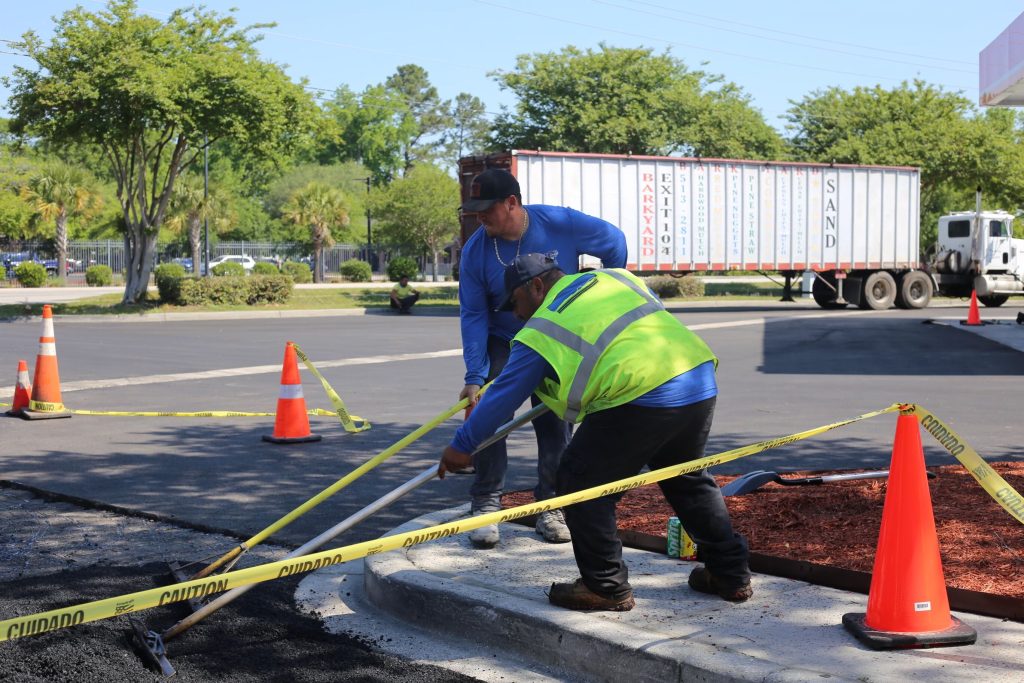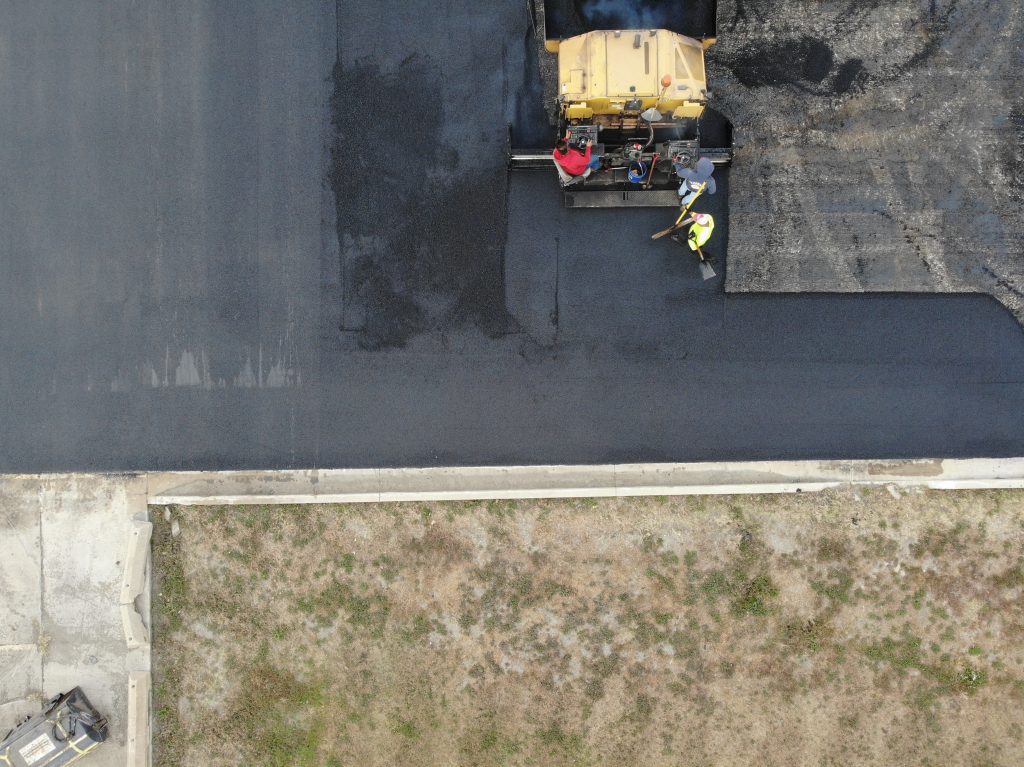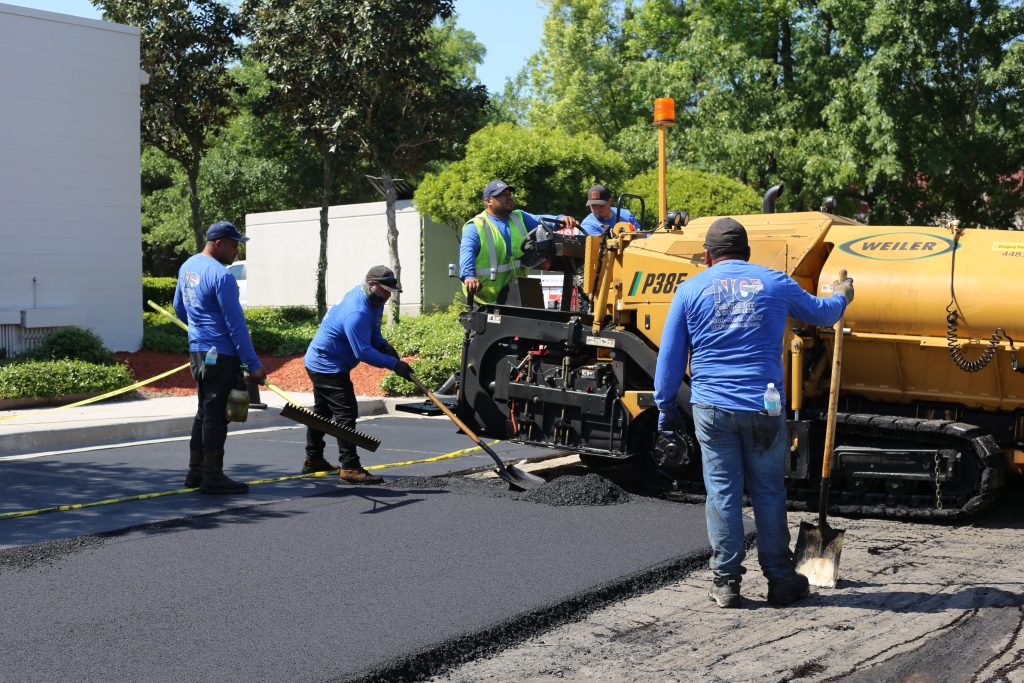Common Commercial Asphalt Problems and How to Prevent Them
Commercial asphalt surfaces endure heavy traffic, harsh weather conditions, and constant wear and tear. Without proper maintenance and proactive care, issues can develop that compromise the pavement’s integrity, safety, and longevity. Understanding common asphalt problems and their prevention methods helps businesses and property managers protect their investment and avoid costly repairs.
1. Cracking: Causes and Prevention
Types of Asphalt Cracks
- Alligator Cracking: Resembles reptile skin and occurs due to structural failure from excessive loads or poor base support.
- Linear Cracks: Appear along joints or in long straight lines due to temperature fluctuations and pavement movement.
- Block Cracking: Large interconnected cracks that form when the asphalt binder shrinks due to age or inadequate moisture control.
Prevention Strategies
- Ensure proper installation with a well-compacted base layer.
- Apply regular sealcoating to protect against moisture and oxidation.
- Fill small cracks promptly before they expand into larger structural failures.
- Use high-quality asphalt mixes designed for heavy commercial use.
2. Potholes: Causes and Prevention
Potholes form when moisture infiltrates cracks, weakens the pavement structure, and allows traffic to break apart the asphalt. They are a major liability for businesses, causing vehicle damage and posing a risk to pedestrians.
Prevention Strategies
- Implement a proactive crack-filling program to stop water infiltration.
- Schedule regular asphalt inspections to identify weak areas before they deteriorate.
- Ensure proper drainage systems to prevent standing water on pavement surfaces.
- Invest in professional patching and overlay solutions when deterioration begins.
3. Raveling and Surface Deterioration
Raveling occurs when the asphalt binder wears away, causing loose aggregate and a rough surface texture. Over time, this leads to material loss and unsafe conditions for vehicles and pedestrians.
Prevention Strategies
- Use high-quality asphalt mixtures with adequate binder content.
- Apply timely sealcoating to protect against UV exposure and oxidation.
- Restrict the use of harsh chemicals or deicing agents that degrade the binder.
- Perform periodic resurfacing to restore pavement integrity.
4. Drainage Issues and Water Damage
Poor drainage accelerates asphalt deterioration by allowing water to penetrate the surface and weaken the subbase. Standing water also creates safety hazards and increases freeze-thaw damage in colder climates.
Prevention Strategies
- Design proper drainage slopes and install catch basins to divert water efficiently.
- Regularly clean and maintain drainage systems to prevent blockages.
- Apply permeable asphalt solutions in high-risk areas to improve water runoff.
- Inspect pavement after heavy storms to identify areas with pooling water.
5. Rutting and Depressions
Rutting refers to permanent indentations in the pavement caused by heavy vehicle loads and insufficient compaction during installation. These depressions collect water and accelerate asphalt deterioration.
Prevention Strategies
- Ensure proper compaction of the base and asphalt layers during installation.
- Use asphalt mixes designed for high-traffic commercial applications.
- Restrict overweight vehicles from parking in vulnerable areas.
- Conduct periodic inspections to detect early signs of rutting and correct them before worsening.
6. Fading and Oxidation
Over time, asphalt fades from deep black to light gray due to oxidation and UV exposure. While this doesn’t immediately affect performance, prolonged exposure weakens the asphalt binder, making it more susceptible to cracking and deterioration.
Prevention Strategies
- Apply a high-quality sealcoat every 2–3 years to protect against oxidation.
- Minimize exposure to standing water and harsh chemicals.
- Use UV-resistant asphalt sealers to extend surface longevity.
- Consider applying asphalt rejuvenators to restore binder flexibility.
Protect Your Commercial Asphalt Investment
Routine maintenance and proactive care are essential to extending the lifespan of commercial asphalt surfaces. Addressing small issues before they escalate helps businesses avoid costly repairs and ensure a safe, professional-looking environment.
Need expert asphalt maintenance and repair services? Contact Us today to schedule an inspection and get a customized pavement management plan.


